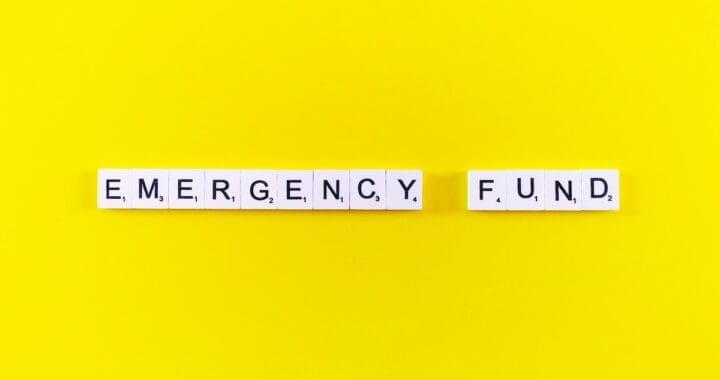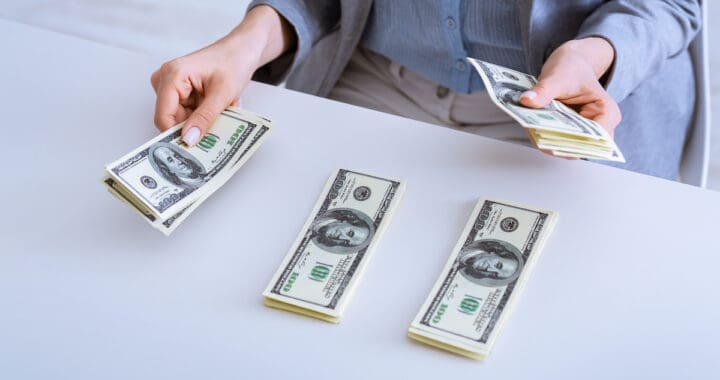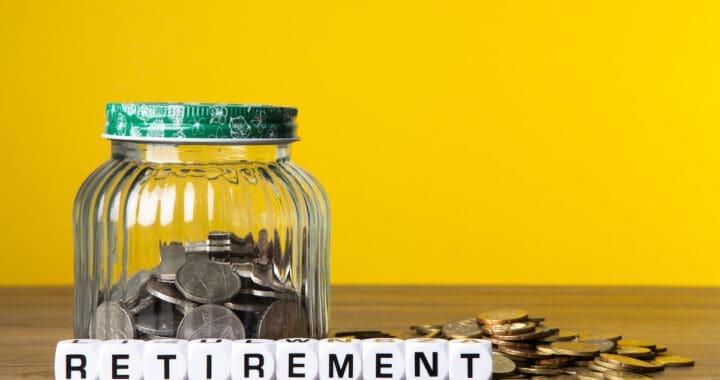Building A Financial Independence Safety Net: The Emergency Fund Challenge
When it comes to the Financial Independence Retire Early (FIRE) journey, you’ve likely heard plenty about aggressive saving and savvy investing. But here’s a truth that often gets overlooked: Your path to financial freedom begins with building a robust emergency fund. In this comprehensive guide, we’ll explore why creating an emergency fund must be your top priority, tackle common emergency fund challenges, and provide you with a step-by-step plan to secure your financial future.
Table of Contents
- Why Should Creating an Emergency Fund Be a Top Priority?
- The Ultimate Guide to Building Your Emergency Fund
- Step 1: Calculating Your Ideal Emergency Fund Size
- Step 2: Choosing the Right Account
- Step 3: Creating a Budget that Supports Your Emergency Fund
- Step 4: Consistent Contributions
- Step 5: Safeguarding Your Fund
- Emergency Fund Challenge: Overcoming Common Roadblocks
- Conclusion: Your Financial Safety Net
Let’s embark on this journey towards financial security and peace of mind.
Why Should Creating an Emergency Fund Be a Top Priority?
Because Life is Full of Surprises
Life is unpredictable. Unexpected storms can hit anytime. A medical emergency, car repairs, a job loss, or a global pandemic. When these crises strike, your emergency fund acts as your financial safety net, offering you:
- Peace of Mind: A Financial Independence Safety Fund is one of the most critical components of a sound financial plan. Knowing you are financially prepared for any unexpected event provides you with a sense of security and peace of mind. Having a well-funded emergency fund can significantly reduce your stress and anxiety levels since you are confident that you have the financial means to handle any curveball life throws you. A robust safety fund allows you to sleep soundly at night, knowing you control your financial future, regardless of any eventuality. It is a powerful tool that gives you the freedom and flexibility to pursue your goals without worrying about financial setbacks. In short, a Financial Independence Safety Fund is the foundation of your financial independence journey, providing the stability and assurance you need to achieve your long-term financial goals.
- Financial Resilience: An emergency fund empowers you to weather financial storms without relying on credit cards or loans. It allows you to reach your long-term financial goals. It also lets you avoid the debt trap and the associated interest rates and fees. In short, an emergency fund is a powerful tool that empowers you with financial resilience, enabling you to withstand any financial challenges that may come your way to achieve your financial independence and Retire Early.
- Control Over Your Destiny: With an emergency fund in place, you take control of your financial future, ensuring that you don’t have to make hasty decisions or tap into your investments prematurely. Instead, you can make well-informed financial decisions that align with your long-term goals without fearing any unexpected financial setbacks. A well-funded emergency fund gives you the freedom and flexibility to pursue your dreams on your terms without worrying about any unforeseen financial emergencies.

The Ultimate Guide to Building Your Emergency Fund
Step 1: Calculating Your Ideal Emergency Fund Size
Before you start setting your emergency fund, you need to determine how much you should aim for. A common rule of thumb is having at least three to six months’ living expenses. However, your unique circumstances may require a more tailored approach.
Pro Tip: Consider factors like your job stability, the number of dependents, and any specific risks in your life. Use an emergency fund calculator to get a precise estimate.
Step 2: Choosing the Right Account
Where you keep your emergency fund matters; it should be easily accessible in times of crisis but also offer some growth potential. Here are your options:
High-Yield Savings Account: A Safe Haven with Competitive Returns
A High-Yield Savings Account is the go-to choice for many when stashing their emergency fund. Here’s why:
- Safety First: High-yield savings accounts are offered by reputable financial institutions and are typically insured by the FDIC (Federal Deposit Insurance Corporation) in the United States, ensuring that your money is safe up to certain limits.
- Accessibility: These accounts offer quick and easy access to your funds when needed. In addition to that, you can transfer money electronically, withdraw from ATMs, or even write checks.
- Better Interest Rates: The ‘high-yield’ in its name signifies better interest rates compared to traditional savings accounts. While they may not match the returns of riskier investments, they provide a respectable return while keeping your funds liquid.
- Low to No Fees: Many high-yield savings accounts come with minimal or no fees, making them cost-effective for emergency fund storage.
Money Market Account: Flexibility Meets Liquidity
Money Market Accounts (MMAs) are another solid option for your emergency fund. They share similarities with high-yield savings accounts but offer unique advantages:
- Flexibility: MMAs often provide flexibility similar to checking accounts. You can write checks or make electronic transfers, which can be advantageous if you need to access your funds for various emergencies.
- Safety and FDIC Insurance: Like high-yield savings accounts, MMAs are typically backed by FDIC insurance, adding an extra layer of security to your funds.
- Competitive Interest Rates: While interest rates on MMAs might be slightly lower than high-yield savings accounts, they still offer competitive returns, making them an attractive choice for short-term savings.
- Tiered Interest Rates: Some MMAs offer tiered interest rates, meaning your earnings can increase as your balance grows. This vehicle can be an incentive to maintain a healthy emergency fund.
Certificates of Deposit (CDs): Locking in Higher Returns with a Twist of Liquidity
Certificates of Deposit (CDs) can be an intriguing option if you’re willing to make a short-term commitment for potentially higher returns:
- Higher Interest Rates: CDs typically offer higher interest rates than regular savings accounts and MMAs, which can help your emergency fund grow more quickly.
- Fixed Terms: CDs come with fixed terms ranging from a few months to several years. During this term, you cannot access your money without incurring penalties, making it a less liquid choice.
- CD Laddering: Consider a CD laddering strategy to maintain liquidity while capitalizing on higher CD interest rates. This involves splitting your emergency fund into multiple CDs with different maturity dates. This way, you have access to some of your funds periodically while taking advantage of higher interest rates on the rest.
- FDIC Insurance: Opt for CDs offered by FDIC-insured banks to ensure your safety. This guarantees that your principal is protected, even if you need to withdraw early with a penalty.
In choosing the proper account for your emergency fund, consider your risk tolerance, liquidity needs, and the interest rates offered. Many individuals opt for a combination of these options, using a high-yield savings account or MMA for quick access to a portion of their funds and CDs for potentially higher returns on the rest. Whichever you choose, your emergency fund will serve as your financial safety net in times of need, providing you with peace of mind as you pursue your FIRE goals.

Step 3: Creating a Budget that Supports Your Emergency Fund
Creating a budget that aligns with your financial goals is crucial to ensure consistent contributions to your emergency fund. Here’s how:
- Track Your Expenses: Embracing budgeting apps like Mint or YNAB can be a game-changer on your journey to financial stability. These powerful tools help you monitor your spending habits and clearly represent where your money goes. By categorizing your expenses, you gain invaluable insights into your financial patterns. This data-driven approach lets you pinpoint areas where you can make strategic cutbacks, optimizing your spending and channeling those savings directly into your emergency fund. Whether it’s realizing you’re overspending on dining out or subscriptions you rarely use, these apps empower you to take control of your finances with precision.
- Automate Savings: The adage “out of sight, out of mind” holds true when it’s about building an emergency fund. Setting up automatic transfers from your checking account to your dedicated emergency fund account is a powerful strategy. Treat it as a non-negotiable monthly bill you must pay to secure your financial future. This automation ensures consistent contributions, removing the temptation to spend that money elsewhere. It’s a proactive approach that builds your emergency fund steadily over time, even when life gets busy. Your emergency fund grows quietly in the background, serving as your financial safety net when you need it most.
- Trim Unnecessary Expenses: Often, small, seemingly inconsequential expenses can add up and divert funds away from your emergency fund. Simple changes like cooking at home more often instead of dining out or canceling unused subscriptions can free up valuable resources. The key is to identify these areas in your budget where you can trim the fat without sacrificing your quality of life. Each dollar saved through these minor adjustments is a dollar that can reinforce your financial security. These little lifestyle tweaks not only contribute to the growth of your emergency fund but also foster a mindful spending ethos, aligning you more closely with your FIRE (Financial Independence Retire Early) goals.
Step 4: Consistent Contributions
Building an emergency fund is a long marathon, not a sprint. Consistency is key. Here’s how to stay on track:
- Set Milestones: Building a sizable emergency fund can seem daunting, but breaking it down into smaller, manageable milestones can make it much more achievable. Start by determining your ultimate goal: three, six, or twelve months’ worth of living expenses. Then, divide that goal into smaller chunks. For example, if your target is $12,000 for a six-month fund, aim to save $2,000 per month or $500 per week. These milestones serve as stepping stones to your larger goal and provide a sense of accomplishment as you hit each one. Celebrating your progress along the way, even in small ways, can keep you motivated and on track.
- Windfalls and Bonuses: Unexpected windfalls, such as tax refunds, work bonuses, or unexpected gifts, can be a pleasant surprise for your emergency fund. Instead of using these windfalls for discretionary spending, consider allocating a portion or even the entirety to boost your emergency fund. This strategy turbocharges your fund’s growth without impacting your regular contributions. It’s like giving your financial safety net a shot of adrenaline. Over time, these windfalls can significantly pad your emergency fund, providing even more security when life throws curveballs.
- Side Hustles: If you’re looking to expedite your emergency fund’s growth, consider exploring side hustles or freelancing opportunities as income streams. The gig economy offers a plethora of options, from freelance writing and graphic design to pet-sitting or driving for rideshare services. The income generated from a side hustle can be entirely dedicated to your emergency fund, accelerating its growth. Additionally, side hustles provide extra income and diversify your revenue streams, enhancing your overall financial stability. They can be a valuable asset in reaching your emergency fund goals quicker and, ultimately, achieving financial peace of mind.
Step 5: Safeguarding Your Fund
Your emergency fund is for genuine emergencies, not impulse purchases or vacations. Here’s how to protect it:
- Emergency Fund Only: Discipline is crucial for your emergency fund. Ensure you use it exclusively for emergencies, such as unexpected medical bills, necessary car repairs, or sudden job loss. Temptations to dip into the fund for non-essential expenses can arise, but maintaining a strict boundary between your emergency fund and discretionary spending is essential. It’s your financial safety net, and preserving its integrity ensures it supports you when you genuinely need it. Develop a clear understanding of what constitutes a genuine emergency to prevent any misuse of these funds.
- Replenish Promptly: Life’s unexpected events can lead to withdrawals from your emergency fund. When you do need to tap into it, make it a priority to replenish the fund as soon as possible. Treat it as a debt to yourself that needs to be repaid promptly. Establish a plan for how you’ll restore the fund, whether through increased contributions or allocating windfalls or bonuses. The sooner you regain your emergency fund, the better prepared you’ll be for the next unforeseen challenge that might come your way.
- Review and Adjust: As your life circumstances evolve, it’s essential to review and adjust your emergency fund size periodically. Significant life changes such as marriage, the birth of a child, a new job, or purchasing a home can impact your financial needs. Reassess whether your existing emergency fund is still sufficient to cover your living expenses in a crisis. It’s a proactive step in ensuring that your financial safety net aligns with your current situation. Adjusting your fund accordingly guarantees that it remains an effective shield against life’s uncertainties.

Emergency Fund Challenge: Overcoming Common Roadblocks
Building an emergency fund may not always be smooth sailing. Here are some common challenges and how to overcome them:
- Low Income: If your income is limited, focusing on reducing expenses becomes paramount. Create a frugal budget that prioritizes essentials while cutting out discretionary spending. Find ways to save on necessities like groceries, utilities, and transportation. Additionally, consider seeking part-time work or exploring opportunities in the gig economy. Gig work can provide an extra source of income that can be exclusively dedicated to your emergency fund, even if it’s just a tiny amount. Every contribution counts and brings you closer to your financial security goals.
- High Debt: Dealing with high-interest debts can be daunting, but addressing them strategically is essential. Prioritize paying off high-interest debts first, as they can erode your financial stability. However, start your emergency fund before you’re entirely debt-free. Begin with a small fund, even if it’s just a few hundred dollars. This provides a financial buffer for unexpected expenses and prevents you from depending on credit cards when emergencies arise. Once your high-interest debts are under control, you can redirect more funds toward growing your emergency fund.
- Lack of Discipline: Discipline can be a challenge for many when related to consistent saving. To overcome this hurdle, automate your contributions. Set up automatic transfers from your checking account to your emergency fund on a schedule that aligns with your payday. By automating, you remove the need for active discipline. Treat your emergency fund contribution as a non-negotiable expense, just like your rent or mortgage payment. This approach ensures you consistently fund your financial safety net without relying on willpower alone.
- Unexpected Expenses: Life is inherently unpredictable, and incidental expenses can throw a wrench into your savings plan. Be flexible and willing to adjust your plan as needed when unexpected curveballs arise. Your emergency fund is designed to support you during these times. It’s okay to divert your contributions to cover immediate, unforeseen expenses temporarily. Once the situation stabilizes, resume your regular contributions to replenish and fortify your emergency fund. Adaptability and resilience are vital qualities in maintaining your financial safety net.
Your Financial Safety Net
In conclusion, creating an emergency fund should be a top priority on your journey to financial independence and early retirement. It provides the peace of mind, financial resilience, and control over your destiny that are essential in an unpredictable world.
By following the ultimate guide outlined in this article and tackling common emergency fund challenges head-on, you’ll be well on your way to building a robust financial safety net. Remember, your emergency fund isn’t just about protecting your finances; it’s about safeguarding your dreams and securing your path to FIRE.
So, are you ready to take the first step towards financial peace of mind? Start building your emergency fund today, and watch as your financial future becomes more secure with each contribution.
Frequently Asked Questions (FAQ)
1. What is an emergency fund, and why do I need one?
An emergency fund is a financial cushion that you set aside for unexpected expenses or emergencies, such as medical bills, car repairs, or job loss. It offers peace of mind, financial resilience, and control over your financial destiny. Having one is crucial to safeguard your financial stability and work towards your financial independence and early retirement (FIRE) goals.
2. How much should I save in my emergency fund?
The ideal amount varies from person to person, but a standard guideline is to aim for three to six months’ worth of living expenses. Your unique circumstances, including job stability, dependents, and financial goals, may require a more tailored approach. Use an emergency fund calculator to get your precise target.
3. What’s the best account to keep my emergency fund in?
The best account for your emergency fund should balance accessibility and potential growth. High-yield savings and money market accounts are excellent options due to their safety, accessibility, and competitive interest rates. Certificates of Deposit (CDs) can offer higher returns but come with lock-in periods. Consider a combination of these options for liquidity and growth.
4. How do I ensure consistent contributions to my emergency fund?
Consistency is crucial. Set milestones to break your goal into manageable chunks, celebrate your progress, and stay motivated. Utilize unexpected windfalls like tax refunds or bonuses to boost your fund. Consider side hustles or freelancing to increase your income, accelerating your fund’s growth.
5. How can I prevent misusing my emergency fund for non-emergencies?
Discipline is key. Discipline yourself to use the fund exclusively for genuine emergencies like medical bills, car repairs, or unexpected job loss. When you need to dip into it, prioritize replenishing it. Additionally, periodically review and adjust your fund’s size to align with your evolving life circumstances.
6. What if I have a low income or high debts?
Low income should encourage you to build an emergency fund. Focus on reducing expenses and explore part-time work or gig economy opportunities to increase your funds. For those with high debts, prioritize paying off high-interest debts while starting with a small emergency fund to prevent reliance on credit in emergencies.
7. How can I overcome a lack of discipline in saving?
Automate your contributions to your emergency fund to eliminate the need for active discipline. Set up automatic transfers from your checking account on payday, treating it as a non-negotiable expense. Automation ensures consistent savings without relying solely on willpower.
8. What if unexpected expenses arise while I’m building my fund?
Life can throw unexpected curveballs. Be flexible and adjust your plan as needed. Your emergency fund is there to support you during these times. Temporarily divert contributions to cover immediate expenses, and once the situation stabilizes, resume regular contributions to replenish and strengthen your fund.
Remember that building an emergency fund is a journey, not a sprint. It’s a vital step toward financial freedom and the FIRE lifestyle. Start today, stay committed, and watch your financial security grow, empowering you to pursue your dreams confidently.





